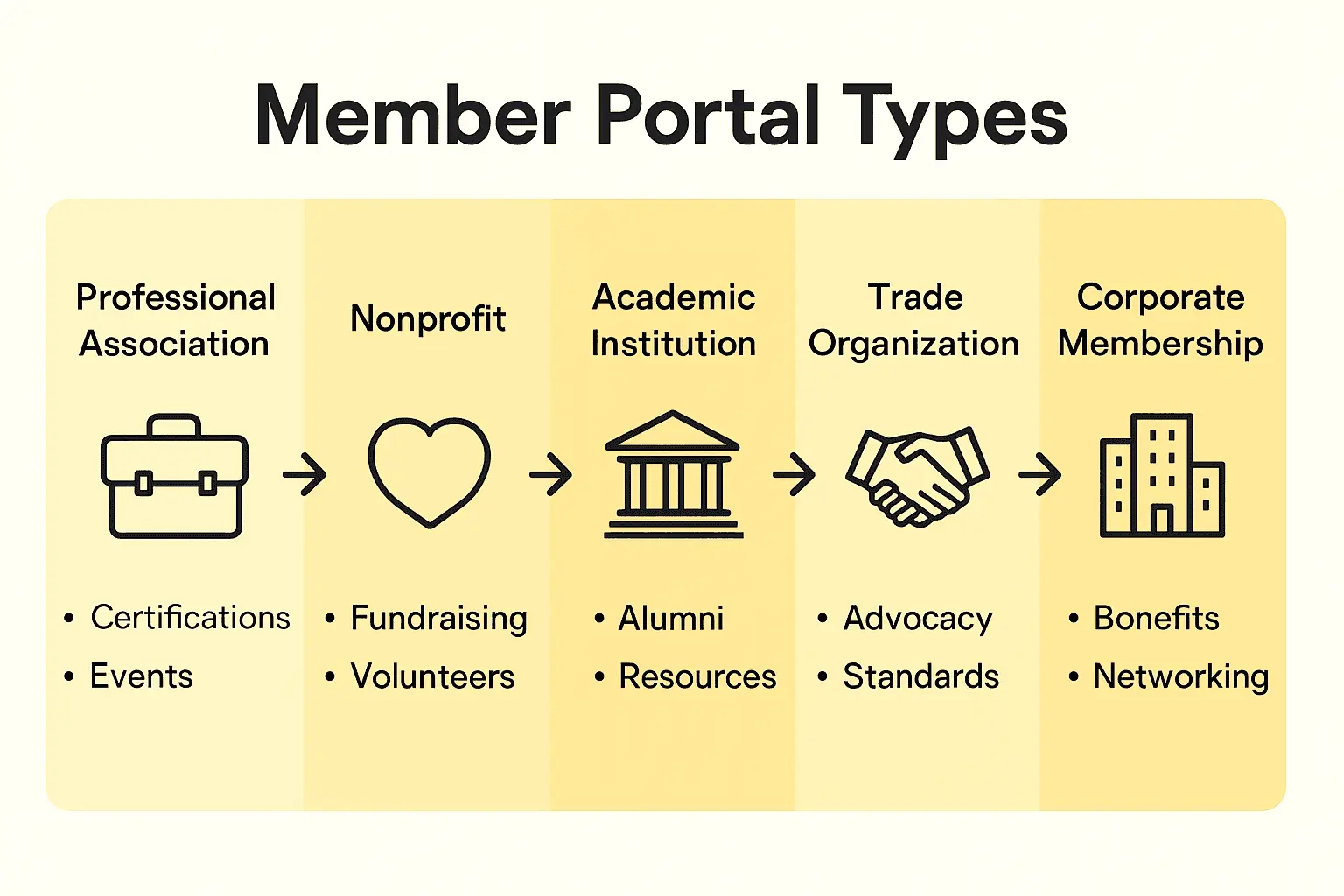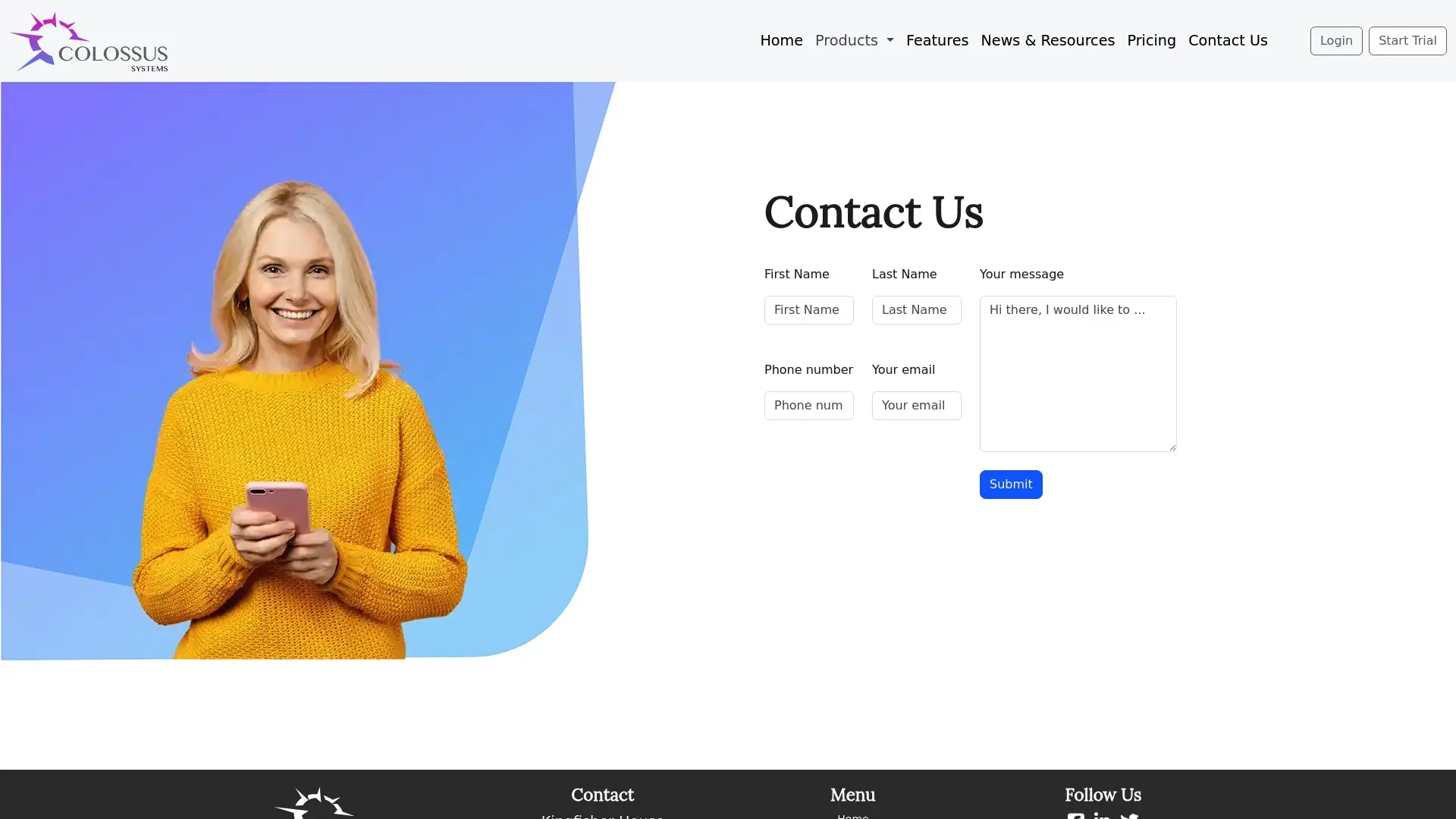What Is Member Portal? Complete Overview for 2024

Did you know that over 70 percent of organisations now depend on digital portals to connect with their members? For businesses and groups, a secure member portal is more than a digital upgrade. It shapes the way people access information, services, and support. By understanding how these powerful tools work, you can make smarter decisions that improve security, convenience, and engagement for every member.
Table of Contents
- Defining Member Portals And Core Concepts
- Types Of Member Portals And Their Applications
- Essential Features And Functionalities Explained
- How Member Portals Transform Member Engagement
- Security, Integration, And Common Challenges
Key Takeaways
| Point | Details |
|---|---|
| Member Portals Enhance Engagement | They provide personalised communication and community-building features, transforming member relationships from transactional to interactive. |
| Security is Paramount | Implementing robust authentication and data protection measures is crucial to safeguard sensitive organizational information. |
| Diverse Applications Exist | Member portals cater to various audiences including professional associations, nonprofits, and academic institutions, each with distinct features. |
| Integration and Scalability Challenges | Organizations must address legacy system compatibility and ensure that member portals grow with evolving needs while maintaining security. |
Defining Member Portals and Core Concepts
A member portal represents a secure digital gateway designed exclusively for specific user groups within an organisation, providing tailored access to exclusive resources and personalised services. According to DevX, it is a secure online platform crafted to meet the unique needs of its designated user community.
At its core, a member portal functions as a sophisticated communication and engagement tool that transforms how organisations interact with their members. LawInsider defines it as an online communication platform operated by an organisation, enabling users to access customised information relevant to their specific interests and requirements. These digital environments are meticulously designed to streamline information exchange, enhance member experience, and provide a centralised hub for organisational interactions.
The fundamental characteristics of an effective member portal typically include:
- Secure Authentication: Robust login mechanisms ensuring only authorised members can access the platform
- Personalised Dashboard: Customised interfaces displaying relevant information, updates, and resources
- Resource Library: Comprehensive collection of documents, guides, and materials specific to member needs
- Communication Tools: Integrated messaging, discussion forums, and collaboration features
- Self-Service Capabilities: Options for members to update profiles, register for events, and manage memberships independently
Moreover, modern member portals go beyond simple information repositories. They serve as dynamic engagement platforms that foster community building, facilitate professional networking, and provide seamless access to organisational services.
 Discover more about member management strategies to understand how these digital ecosystems can transform member interactions.
Discover more about member management strategies to understand how these digital ecosystems can transform member interactions.
Types of Member Portals and Their Applications
Member portals are not a one-size-fits-all solution, but rather a diverse ecosystem of digital platforms tailored to specific organisational needs. Wikipedia describes these platforms as electronic gateways that allow secure digital access to files, services, and information over the Internet, highlighting their fundamental versatility and adaptability.
The landscape of member portals can be broadly categorised into several distinct types, each serving unique organisational objectives:
Here’s a summary comparing the main types of member portals and their typical applications:

| Portal Type | Primary Audience | Key Features |
|---|---|---|
| Professional Association | Industry professionals | Networking Career resources Continuing education |
| Nonprofit Member | Donors and volunteers | Donor management Volunteer coordination Community updates |
| Academic Institution | Students and alumni | Educational resources Alumni networks Institutional news |
| Trade Organisation | Industry members | Regulatory updates Information sharing Collaboration tools |
| Corporate Membership | Internal and external stakeholders | Training Communication Resource management |
- Professional Association Portals: Designed for industry groups, providing networking opportunities, continuing education resources, and career development tools
- Nonprofit Member Portals: Focus on donor engagement, volunteer management, and community communication
- Academic Institution Portals: Support student and alumni interactions, offering access to educational resources, alumni networks, and institutional communications
- Trade Organisation Portals: Enable industry-specific information sharing, regulatory updates, and professional collaboration
- Corporate Membership Portals: Support internal and external stakeholder communication, training, and resource management
According to Wikipedia’s enterprise portal definition, these digital platforms integrate information, people, and processes across organisational boundaries, providing a secure unified access point. This integration transforms member portals from simple information repositories into dynamic, interactive ecosystems that facilitate meaningful connections and streamline organisational workflows.
Beyond basic functionality, modern member portals have evolved to become sophisticated engagement platforms.
Understand more about optimising these digital environments to leverage their full potential for organisational growth and member satisfaction.
Essential Features and Functionalities Explained
Modern member portals are sophisticated digital platforms that go far beyond simple information repositories. Wikipedia highlights that these systems offer critical features like strict security measures, comprehensive accessibility, and robust user management capabilities that transform how organisations interact with their members.
The core functionalities of an effective member portal typically encompass several key dimensions:
-
User Authentication and Security: Multi-factor login mechanisms, encrypted data transmission, and granular access controls
-
Personalised User Dashboards: Customisable interfaces displaying relevant information, notifications, and personalised content
-
Communication Tools: Integrated messaging systems, discussion forums, event calendars, and announcement boards
-
Resource Management: Comprehensive document libraries, searchable knowledge bases, and content categorisation systems
-
Self-Service Capabilities: Profile management, membership renewal, event registration, and automated payment processing
Wikipedia’s library portal research further underscores the importance of providing a single, unified access point that simplifies complex information ecosystems. These platforms are designed to streamline user interactions, reduce administrative overhead, and create seamless digital experiences that feel intuitive and responsive.
Beyond technical capabilities, modern member portals represent strategic engagement tools that bridge communication gaps and foster meaningful connections. Explore our comprehensive guide to member management software to understand how these digital platforms can revolutionise organisational interactions and member experiences.
How Member Portals Transform Member Engagement
Member engagement has undergone a radical transformation with the advent of digital portals. Webopedia illustrates this shift by highlighting how modern portals centralize information, enabling users to manage multiple aspects of their interactions from a single, convenient location. These digital platforms have become more than just information repositories they are dynamic engagement engines that fundamentally reshape organisational communication.
The key mechanisms through which member portals drive engagement include:
- Personalised Communication: Targeted messaging and notifications tailored to individual member interests and behaviours
- Transparent Information Access: Real-time updates, resources, and insights readily available 24/7
- Interactive Community Building: Discussion forums, networking opportunities, and collaborative spaces
- Performance Tracking: Comprehensive dashboards showing member progress, achievements, and organisational contributions
- Seamless Self-Service: Enabling members to manage their profiles, renewals, and interactions independently
Core Docs emphasises how these portals enhance communication by providing comprehensive visibility into member activities, progress, and opportunities. By breaking down traditional communication barriers, organisations can create more meaningful, responsive, and transparent relationships with their members.
Ultimately, member portals represent a strategic approach to engagement that goes beyond transactional interactions. Discover proven strategies for improving member engagement and unlock the full potential of your digital community platforms.
Security, Integration, and Common Challenges
Cybersecurity stands as the most critical consideration for modern member portals. Wikipedia emphasises the importance of implementing strict security measures, including advanced authentication protocols like two-factor authentication and comprehensive encryption techniques to protect sensitive organisational information.
The primary security and integration challenges organisations encounter with member portals include:
- Data Protection Vulnerabilities: Managing complex user access rights and preventing potential security breaches
- Legacy System Compatibility: Ensuring smooth integration with existing organisational technology infrastructure
- User Authentication Complexity: Implementing robust identity verification without compromising user experience
- Scalability Limitations: Designing systems that can grow with organisational needs
- Compliance Requirements: Maintaining alignment with industry-specific regulatory standards
Wikipedia’s enterprise portal research highlights how these digital platforms must integrate information, people, and processes across organisational boundaries while maintaining a secure, unified access point. This integration represents a delicate balance between accessibility and protection, requiring sophisticated technological solutions.
Navigating these challenges demands a strategic approach that prioritises both technological resilience and user-friendly design. Learn more about online payment security strategies to understand how leading organisations are addressing these critical digital infrastructure challenges.
Unlock the Full Potential of Your Member Portal with Colossus Systems
Understanding the challenges of creating a secure, engaging, and fully integrated member portal is vital for organisational success. As highlighted in the article, pain points such as seamless member communication, personalised dashboards, and robust security require more than just basic tools. Colossus Systems offers a comprehensive solution tailored to these exact needs, blending membership management, event planning, virtual training, and secure payment integrations into one powerful platform. This means you can focus on growing your community while our technology simplifies your daily operations.

Ready to transform your member engagement and streamline your organisational workflows? Discover how our customisable platform can help you build a secure, interactive, and engaging member portal today. Don’t let outdated systems hold you back from delivering the seamless experience your members expect. Contact us now to learn more about how to empower your organisation with Colossus Systems. Explore our member management software guide and improving member engagement strategies to see the transformation in action.
Frequently Asked Questions
What is a member portal?
A member portal is a secure digital platform designed for specific user groups within an organisation, providing tailored access to exclusive resources and personalised services.
What are the key features of an effective member portal?
Key features typically include secure authentication, personalised dashboards, a resource library, communication tools, and self-service capabilities for members.
How do member portals enhance member engagement?
Member portals enhance engagement by providing personalised communication, transparent access to information, interactive community building, performance tracking, and seamless self-service options for users.
What common challenges do organisations face with member portals?
Common challenges include data protection vulnerabilities, legacy system compatibility, user authentication complexity, scalability limitations, and compliance with regulatory requirements.